Step-by-Step Guide to Tracking Customer Service Metrics
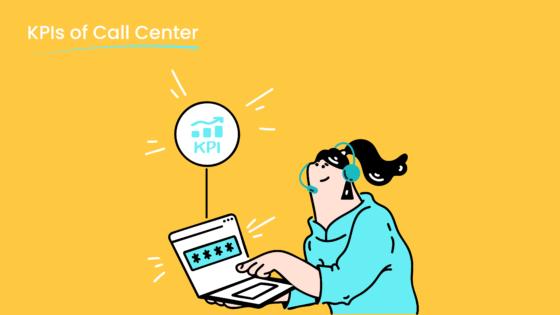
Tracking customer service metrics transforms how you understand and improve customer interactions. Metrics like First Contact Resolution (FCR) and Average Handle Time (AHT) reveal how efficiently your team resolves issues. A higher Customer Satisfaction Score (CSAT) and Net Promoter Score (NPS) reflect happier customers and stronger loyalty. Tracking these metrics not only helps you optimize processes but also reduces costs. Tools like Sobot’s Voice Call Center simplify this process by offering real-time monitoring and analysis, helping you track critical data effortlessly. When you track customer service performance metrics, you unlock the potential to refine operations and deliver exceptional experiences.
Understanding Customer Service Metrics
What Are Customer Service Metrics?
Customer service metrics are measurable indicators that help you evaluate the performance of your customer support team. These metrics provide insights into how well your team meets customer expectations and resolves issues. They act as a compass, guiding you toward improving customer satisfaction and operational efficiency. For example, metrics like First Contact Resolution (FCR) measure how often customer issues are resolved in the first interaction, while Average Handle Time (AHT) tracks the time spent on each interaction.
Think of these metrics as a feedback loop. They allow you to understand what’s working and what needs improvement. By tracking essential customer service metrics, you can identify trends, optimize processes, and enhance the overall customer experience. Tools like Sobot’s Voice Call Center simplify this process by offering real-time tracking and analysis, ensuring you stay on top of your performance goals.
Why Are Customer Service Metrics Important?
Customer service metrics are vital because they directly impact your business's success. They help you measure customer satisfaction, identify pain points, and improve service quality. For instance, research shows that acquiring new customers costs five times more than retaining existing ones. Metrics like Customer Retention Rate (CRR) and Net Promoter Score (NPS) highlight how well you’re fostering customer loyalty.
Moreover, these metrics provide actionable insights. Simplifying customer interactions, as measured by Customer Effort Score (CES), can lead to higher repeat purchases and recommendations. Companies with high NPS scores often grow twice as fast as their competitors. By focusing on customer-centric metrics, you can align your strategies with customer expectations and drive sustainable growth.
| Metric Type | Current Performance | Historical Performance | Trend Direction |
|---|---|---|---|
| First Reply Time | Higher than goals | Lower than last year | Trending in right direction |
| Customer Satisfaction | N/A | N/A | N/A |
Common Customer Service Performance Metrics to Track
Tracking the right customer service performance metrics ensures you focus on what matters most. Here are some key metrics to consider:
- Customer Satisfaction Score (CSAT): Measures how satisfied customers are with your service. A high CSAT indicates that you’re meeting customer expectations effectively.
- Net Promoter Score (NPS): Gauges customer loyalty by asking how likely they are to recommend your business. Companies with high NPS scores often outperform their competitors.
- First Contact Resolution (FCR): Tracks the percentage of issues resolved in the first interaction. Higher FCR rates lead to better customer satisfaction.
- Average Handle Time (AHT): Measures the average time spent on resolving customer issues. Reducing AHT without compromising quality improves efficiency.
- Customer Effort Score (CES): Evaluates how easy it is for customers to interact with your business. Lower effort scores correlate with higher customer loyalty.
- Customer Retention Rate (CRR): Indicates the percentage of customers retained over a specific period. A high CRR reflects strong customer loyalty and satisfaction.
- Customer Churn Rate: Tracks the percentage of customers lost over time. Lower churn rates signify better customer retention strategies.
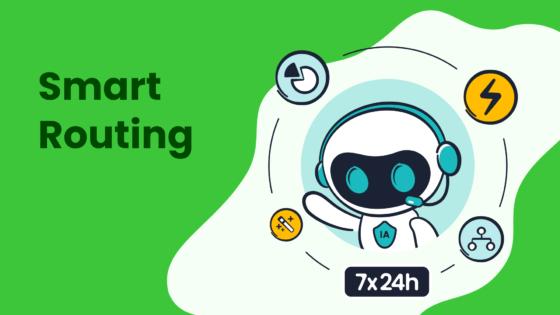
Tip: Use tools like Sobot’s Voice Call Center to track these metrics seamlessly. Its real-time monitoring and AI-powered analytics help you identify trends and make data-driven decisions.
| Metric | Definition | Calculation Formula | Industry Benchmark Example |
|---|---|---|---|
| Churn Rate | Percentage of customers lost over a specific time period. | (Number of customers lost / Number of customers at start) x 100 | SaaS: 5% to 7% annually, Telecommunications: higher |
| Customer Effort Score (CES) | Measures the ease of interaction for customers. | Average of customer ratings on a scale (e.g., 1 to 7) | N/A |
| Average Handle Time (AHT) | Time taken to handle a customer interaction from start to finish. | Total time for all interactions / Number of interactions | N/A |
| Service-Level Agreement (SLA) | Measures compliance with service delivery standards. | (Number of incidents meeting SLA / Total incidents) x 100 | 90% of tickets resolved within 24 hours |
| Customer Retention Rate (CRR) | Percentage of customers retained over a specific time period. | [(Customers at end - New customers) / Customers at start] x 100 | N/A |
By focusing on these metrics, you can create a customer-centric approach that enhances satisfaction and builds loyalty. Sobot’s solutions, such as its omnichannel platform, provide the tools you need to track and improve these metrics effectively.
Setting Goals and Objectives for Tracking
Aligning Metrics with Business Goals
Aligning customer service metrics with your business goals ensures that every effort contributes to your overall success. Start by identifying key performance indicators (KPIs) that directly reflect your objectives. For example, if your goal is to improve customer loyalty, focus on metrics like customer retention rate and Net Promoter Score (NPS). These metrics reveal how well your service fosters long-term relationships and advocacy.
Establishing clear goals is essential. Use a measurement framework to monitor critical areas such as customer satisfaction and operational efficiency. For instance, Sobot’s Voice Call Center offers real-time monitoring tools that help you track metrics like First Contact Resolution (FCR) and Average Handle Time (AHT). These insights allow you to align your customer service performance with broader business objectives, such as reducing churn or increasing repeat purchases.
Tip: Select metrics that resonate with your industry. Retail businesses might prioritize CSAT, while SaaS companies often focus on customer retention rate.
Defining Clear and Measurable Objectives
Clear and measurable objectives provide a roadmap for tracking and improving customer service. Frameworks like OKRs (Objectives and Key Results) and the MASTER framework help you set actionable goals. For example:
| Framework | Description | Example |
|---|---|---|
| OKRs | Aligns objectives with measurable key results to track progress. | Objective: Improve customer retention rate; Key Results: Reduce churn by 10% in Q2. |
| MASTER Framework | Adapts SMART goals for dynamic environments. | Measurable outcomes include higher CSAT and lower AHT. |
When defining objectives, ensure they are specific, measurable, achievable, relevant, and time-bound (SMART). For instance, instead of saying, “Improve customer satisfaction,” aim for “Increase CSAT by 15% within six months.” Tools like Sobot’s omnichannel solution simplify tracking these objectives by consolidating data across multiple channels.
Examples of Effective Customer Service Goals
Effective goals focus on improving both customer experience and operational efficiency. Here are some examples:
- Enhance Customer Retention Rate: Reduce churn by 5% over the next quarter by improving First Contact Resolution (FCR) rates.
- Boost Customer Satisfaction: Achieve a CSAT score of 90% by implementing AI-driven chatbots to handle repetitive queries.
- Reduce Average Handle Time: Decrease AHT by 20% within three months through better agent training and workflow automation.
Businesses like Samsung have achieved remarkable results by setting clear goals. By using Sobot’s all-in-one contact center solution, Samsung increased agent efficiency by 30% and achieved a 97% customer satisfaction rate. These examples highlight how measurable objectives drive tangible improvements.
Note: Always tailor your goals to your customers’ needs. For instance, prioritize being available on the channels your customers value most, such as live chat or WhatsApp.
Identifying the Right Metrics to Track
Key Metrics for Measuring Customer Experience (e.g., CSAT, NPS, FCR)
To measure customer experience effectively, you need to focus on metrics that reflect customer sentiment and operational efficiency. Customer Satisfaction Score (CSAT) is one of the most widely used metrics, with 47% of contact center professionals identifying it as the most important. It measures how satisfied customers are with your service, offering a direct indicator of their experience.
Another critical metric is Net Promoter Score (NPS), which gauges customer loyalty by asking how likely they are to recommend your business. While some experts argue that NPS and CSAT can be "vanity metrics," they remain valuable when paired with actionable insights. First Contact Resolution (FCR) is equally essential, as it tracks the percentage of issues resolved during the first interaction. Industries with high-quality support often achieve an FCR rate above 75%, which directly correlates with improved customer satisfaction.
Metrics like Average Resolution Time (ART) also play a vital role. Reducing ART without compromising quality enhances efficiency and boosts the overall resolution rate. Tools like Sobot’s Voice Call Center simplify tracking these metrics by offering real-time monitoring and AI-powered analytics, helping you identify trends and improve performance.
Choosing Metrics Based on Industry and Business Model
Your industry and business model significantly influence which customer service metrics you should prioritize. For example, retail businesses often focus on CSAT to ensure customers are satisfied with their purchases. In contrast, SaaS companies may prioritize metrics like customer retention rate and FCR to maintain long-term relationships.
A comparative analysis of life services enterprises highlights how business models impact metric selection. Companies that innovate their business models often see improvements in customer perceived value. For instance, businesses offering subscription-based services might emphasize metrics like churn rate and average resolution time to ensure customer loyalty.
Sobot’s omnichannel solution supports diverse industries by consolidating data across multiple channels. This unified approach allows you to track metrics tailored to your business needs, whether you’re in retail, financial services, or gaming.
Avoiding Common Mistakes in Metric Selection
Selecting the wrong metrics can lead to misguided strategies. Common mistakes include ignoring the opportunity cost of capital and using unrealistic assumptions. For example, failing to account for the time value of money can distort project valuations, while overlooking qualitative aspects may undervalue critical initiatives.
| Common Mistakes in Metric Selection | Description |
|---|---|
| Ignoring the opportunity cost of capital | Overlooking alternative investments can lead to poor decisions. |
| Using unrealistic assumptions | Distorted assumptions about future variables can mislead strategies. |
| Failing to account for the time value of money | Not discounting future cash flows can skew comparisons. |
| Ignoring qualitative aspects | Overemphasis on numbers can undervalue customer sentiment. |
To avoid these pitfalls, focus on metrics that align with your goals and provide actionable insights. Sobot’s solutions, such as its Voice Call Center, help you track meaningful metrics like FCR and ART, ensuring your strategies drive real improvements.
Tools and Methods for Tracking Customer Service Metrics
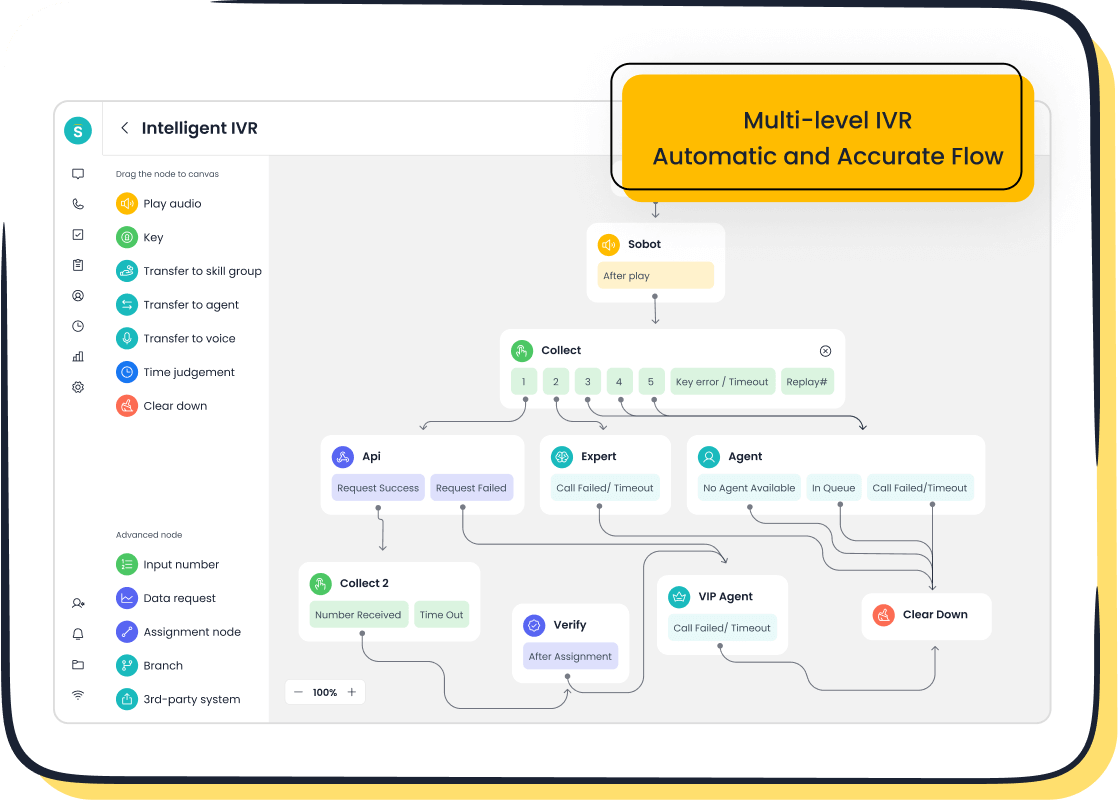
Overview of Tracking Tools (e.g., Sobot Voice/Call Center)
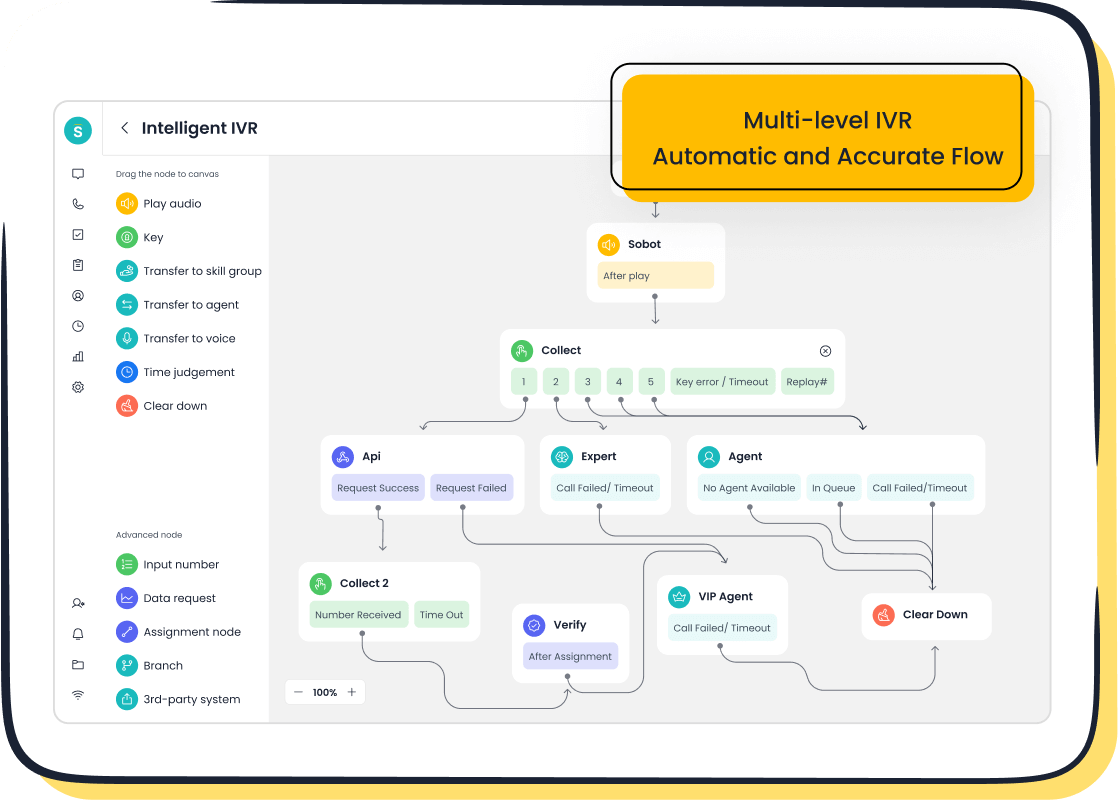
Tracking tools play a crucial role in monitoring customer service metrics effectively. They help you collect, analyze, and act on data to improve customer interactions. One standout tool is Sobot’s Voice Call Center, which offers advanced features like AI-powered analytics, real-time monitoring, and intelligent call routing. These capabilities simplify the process of tracking metrics such as First Contact Resolution (FCR) and Average Handle Time (AHT).
Modern tracking tools leverage cutting-edge technologies to enhance performance. For example, platforms with Natural Language Processing (NLP) enable chatbots to understand and respond to customer queries accurately. Machine learning further improves chatbot efficiency by learning from past interactions. Tools like Sobot’s Voice Call Center also provide multi-language support, allowing you to cater to a global audience seamlessly.
| Feature/Metric | Description |
|---|---|
| AI-Powered Platform | Designed to enhance customer interactions for businesses of all sizes. |
| Natural Language Processing (NLP) | Enables chatbots to understand and respond to queries accurately and contextually. |
| Machine Learning | Continuously improves chatbot performance by learning from past interactions. |
| Analytics Dashboard | Provides insights into customer interactions and tracks key performance metrics. |
| Multi-Language Support | Allows businesses to cater to a global audience with customer support in various languages. |
| Integration Options | Connects with existing CRM systems and other third-party tools. |
| Proactive Engagement Features | Initiates conversations based on user behavior or predefined rules. |
| Ticketing System | Manages and tracks customer issues for efficient resolution. |
These features make tools like Sobot’s Voice Call Center indispensable for tracking customer service metrics and driving customer success automation.
Features to Look for in Tracking Tools
Choosing the right tracking tool requires you to focus on features that align with your business needs. Essential features include real-time benchmarks, campaign management, and comprehensive insights. Real-time benchmarks allow you to compare your performance against industry standards instantly. Campaign management tools help you plan and analyze marketing efforts, ensuring they align with customer service goals.
Sobot’s Voice Call Center offers customizable reporting tools that generate detailed insights for data-driven decision-making. Its sentiment analysis feature gauges customer satisfaction levels, helping you identify areas for improvement. Additionally, integration options ensure seamless connectivity with CRM systems, enhancing operational efficiency.
| Essential Features | Description |
|---|---|
| Automatic Competitor Tracking | Enables users to monitor competitors' activities without manual input. |
| Real-time Benchmarks | Provides up-to-date comparisons against industry standards and competitors. |
| Campaign Management | Facilitates the planning, execution, and analysis of marketing campaigns. |
| Comprehensive Insights & Recommendations | Offers detailed analysis and actionable suggestions based on data collected. |
When selecting tools for tracking customer service metrics, prioritize those that offer scalability, accuracy, and actionable insights. These features ensure you can adapt to changing customer needs and industry trends effectively.
Manual vs. Automated Tracking: Pros and Cons
Tracking customer service metrics can be done manually or through automated systems. Manual tracking involves human effort, which makes it prone to errors and slower processing times. Automated tracking, on the other hand, operates in real time and minimizes inaccuracies.
Automated tools like Sobot’s Voice Call Center excel in scalability. They handle large volumes of data without requiring additional personnel. Manual tracking struggles to match this efficiency, especially for businesses with high customer interaction volumes.
| Aspect | Manual Tracking | Automated Tracking |
|---|---|---|
| Speed | Slower processing times due to human effort | Significant time savings, operates in real time |
| Accuracy | Prone to human errors in data entry | Minimizes errors, ensures consistent data collection |
| Scalability | Limited by human resources | Highly scalable, can handle large volumes of data without additional personnel |
Automated tracking tools also provide advanced features like analytics dashboards and sentiment analysis. These capabilities help you identify trends and optimize customer service strategies. While manual tracking may suit small-scale operations, automated systems are essential for businesses aiming to scale and improve efficiency.
Collecting and Analyzing Data
Best Practices for Data Collection
Effective data collection lays the foundation for tracking customer experience. Start by gathering data from diverse sources, such as customer demographics, online behavior, and service interactions. Use tools like Sobot’s Voice Call Center to streamline this process. Its unified workspace consolidates call data, enabling you to collect information without switching between systems.
Ensure data accuracy by validating inputs and removing duplicates. For example, when collecting feedback, focus on structured surveys and open-ended responses. This approach captures both quantitative and qualitative insights. Additionally, prioritize real-time data collection to monitor customer satisfaction as it evolves.
Tip: Use AI-powered tools to automate repetitive tasks like sorting and categorizing data. This saves time and ensures consistency across datasets.
Techniques for Analyzing Customer Service Metrics
Analyzing customer service metrics requires a mix of techniques to uncover actionable insights. Start with segmentation to group customers based on their preferences or behaviors. This helps you tailor services to specific needs. Predictive modeling is another powerful method. It uses historical data to forecast trends, such as potential churn rates or satisfaction levels.
Visualization tools like graphs and heat maps simplify complex data. For example, Sobot’s analytics dashboard provides visual insights into metrics like First Contact Resolution (FCR) and Average Handle Time (AHT). These tools highlight patterns that might otherwise go unnoticed.
| Analytical Technique | Description |
|---|---|
| Data Collection | Gathering diverse customer data sources, including demographics and online behavior. |
| Segmentation | Dividing customers into groups to analyze their responses to marketing campaigns. |
| Predictive Modeling | Using historical data to forecast future customer behaviors and trends. |
| Visualization Tools | Employing graphs and heat maps to identify trends and patterns in customer service metrics. |
Identifying Trends and Patterns in Customer Experience Data
Identifying trends in customer experience data helps you refine your strategies. Speech and text analytics reveal recurring themes by extracting keywords from conversations. Sentiment analysis detects emotions like frustration or satisfaction, offering deeper insights into customer interactions.
Feedback analysis uncovers common issues and highlights areas for improvement. Real-time analytics, such as those offered by Sobot’s Voice Call Center, provide live insights into customer behavior. Dashboards and trend charts visualize data, making it easier to spot emerging patterns.
- Speech & text analytics: Groups conversations around specific themes.
- Sentiment analysis: Detects emotions like satisfaction or confusion.
- Feedback analysis: Highlights recurring issues and customer needs.
- Real-time analytics: Tracks live customer sentiments and behaviors.
- Predictive analytics: Anticipates churn and customer needs.
Note: Use agent scorecards to monitor individual performance and identify training opportunities. Recommendations based on data insights can guide your team toward improving customer satisfaction.
Using Insights to Improve Customer Service
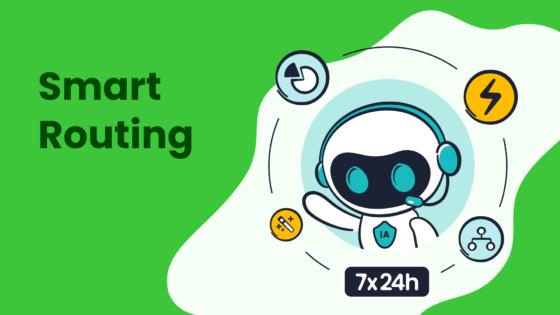
Turning Metrics into Actionable Strategies
Customer service metrics provide a wealth of data, but their true value lies in how you use them to drive improvements. Start by setting clear goals based on customer feedback. For example, if customers frequently mention long wait times, focus on reducing Average Handle Time (AHT). Tailoring your strategies to address specific pain points leads to measurable outcomes, such as higher satisfaction and loyalty.
Collaboration across teams is essential. Share insights from metrics like Net Promoter Score (NPS) or First Contact Resolution (FCR) with your team. This ensures everyone understands the areas needing improvement. Metrics tied to customer experience, such as response times, act as a barometer for customer happiness. Prioritize areas that matter most to your customers, like ease of interaction or quick resolutions, to enhance satisfaction and foster loyalty.
Tip: Use tools like Sobot’s Voice Call Center to track and analyze metrics in real time. Its AI-powered analytics help you identify trends and implement targeted strategies effectively.

Examples of Improvements Using Sobot's Voice/Call Center
Sobot’s Voice Call Center has transformed how businesses improve customer service. By leveraging its features, companies have achieved significant performance gains:
| Improvement Area | Description |
|---|---|
| Agent Adherence Tracking | AI ensures agents follow protocols, improving consistency and quality. |
| Shift Scheduling Optimization | AI-driven tools enhance scheduling efficiency, reducing downtime. |
| Operational Efficiency | Streamlined workflows lead to faster resolutions and better customer experiences. |
For instance, Samsung used Sobot’s platform to unify communication channels and improve agent efficiency by 30%. This resulted in a 97% customer satisfaction rate. The platform’s real-time monitoring and intelligent call routing ensure that agents handle inquiries efficiently, reducing wait times and improving overall satisfaction.
Communicating Insights to Your Team Effectively
Sharing insights with your team requires a structured approach. Conduct regular audits to assess the effectiveness of your strategies. Use these audits to identify areas for improvement and share actionable recommendations. A well-defined communication plan ensures your team understands how to implement changes.
Adopt a multi-channel approach to engage your team. Use dashboards, emails, and team meetings to share updates on metrics like CSAT or FCR. For example, Sobot’s analytics dashboard provides visual insights that make it easier to explain trends and patterns. Encourage open discussions to gather feedback from your team, fostering a culture of continuous improvement.
| Strategy | Description |
|---|---|
| Conduct regular audits | Assess touchpoints and identify areas for improvement. |
| Study your market | Benchmark against competitors to tailor strategies effectively. |
| Well-defined communication | Ensure consistency and clarity in messaging to your team. |
| Multi-channel approach | Use various methods to share insights and engage your team. |
Note: Empower your team by involving them in decision-making. When they understand the "why" behind changes, they are more likely to embrace new strategies.
Monitoring and Adapting Over Time
Setting Up Regular Reviews of Metrics
Regular reviews of customer service metrics ensure your team stays aligned with goals and adapts to changing conditions. By evaluating metrics consistently, you can track progress, identify areas for improvement, and refine strategies. For example, reviewing First Contact Resolution (FCR) rates monthly helps you pinpoint inefficiencies in issue resolution. This process also highlights successes, such as improved satisfaction scores, allowing you to replicate effective practices across your team.
Feedback from employees and customers during these reviews enriches your understanding of service quality. Employees often provide insights into operational challenges, while customers highlight pain points that require immediate attention. Incorporating this feedback fosters inclusivity and ensures your strategies address real-world concerns. Tools like Sobot’s Voice Call Center simplify this process by offering real-time analytics dashboards, enabling you to conduct reviews efficiently and make data-driven decisions.
Adjusting Strategies Based on Results
Adapting strategies based on metric reviews is essential for continuous improvement. When data reveals declining satisfaction or rising churn rates, you must act quickly to address these issues. For instance, if Average Handle Time (AHT) increases, consider implementing workflow automation or additional agent training. These adjustments reduce wait times and improve customer experiences.
Real-time analytics tools, such as those offered by Sobot, provide actionable insights that guide your decisions. Predictive modeling helps you anticipate trends, such as potential drops in satisfaction, allowing you to adjust strategies proactively. By focusing on areas for improvement, you can maintain high service standards and foster customer loyalty.
Encouraging a Culture of Continuous Improvement
Continuous improvement thrives in a culture where feedback and innovation are valued. Encourage your team to share ideas for enhancing service quality. For example, agents might suggest new ways to streamline call routing or improve customer interactions. Recognizing these contributions motivates your team and fosters a sense of ownership.
Regular training sessions also play a key role. Equip your team with the skills needed to adapt to evolving customer expectations. Use tools like Sobot’s omnichannel solution to monitor individual performance and identify training opportunities. By prioritizing areas for improvement, you create a dynamic environment where innovation drives satisfaction and loyalty.
Tip: Celebrate milestones, such as achieving higher satisfaction scores or reducing churn rates. These achievements reinforce the importance of continuous improvement and inspire your team to aim higher.
Tracking customer service metrics transforms how you approach customer interaction and sentiment analysis. Start by identifying key metrics like CSAT and FCR, then align them with your business goals. Regular reviews and compliance audits ensure consistent service quality while uncovering training opportunities. Tools like Sobot’s Voice Call Center simplify this process with real-time analytics and call tracking, helping you adapt strategies quickly. Efficient call handling matters—59% of customers hang up after 10 minutes on hold. By leveraging actionable insights, you improve sentiment, enhance interaction quality, and foster customer loyalty.
FAQ
What are customer service metrics, and why should you track them?
Customer service metrics measure how well your team meets customer needs. Tracking them helps you identify areas for improvement, boost satisfaction, and reduce costs. For example, tracking First Contact Resolution (FCR) ensures faster issue resolution, which improves customer loyalty.
Tip: Use tools like Sobot’s Voice Call Center for real-time tracking and actionable insights.
How can Sobot’s Voice Call Center help track customer service metrics?
Sobot’s Voice Call Center simplifies tracking with features like real-time monitoring, AI-powered analytics, and call tracking. These tools help you measure metrics like Average Handle Time (AHT) and Customer Satisfaction Score (CSAT) effortlessly, ensuring you stay aligned with your goals.
What is the best way to improve First Contact Resolution (FCR)?
Train your agents to handle a wide range of issues and equip them with the right tools. Sobot’s unified workspace consolidates customer data, enabling agents to resolve issues faster. Higher FCR rates lead to better customer satisfaction and reduced operational costs.
How often should you review customer service metrics?
Review metrics like Net Promoter Score (NPS) and Customer Effort Score (CES) monthly. Regular reviews help you identify trends and adjust strategies. Tools like Sobot’s analytics dashboard provide real-time insights, making it easier to monitor performance consistently.
Can tracking customer service metrics reduce costs?
Yes! Metrics like Average Handle Time (AHT) and Customer Retention Rate (CRR) highlight inefficiencies. By addressing these, you save time and resources. For instance, Sobot’s AI-powered Voice Call Center reduces repetitive tasks, allowing agents to focus on complex issues, which lowers operational costs.
Example: Samsung improved agent efficiency by 30% using Sobot’s solutions, reducing costs significantly.
See Also
Enhancing Call Center Efficiency Through Effective Monitoring Strategies
Ten Essential Tips for Selecting Social Media Support Tools
Ten Key Steps for Deploying Omnichannel Contact Center Solutions
A Comprehensive Guide to Quality Management Systems in Call Centers
